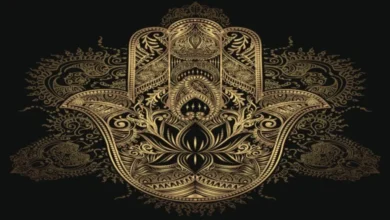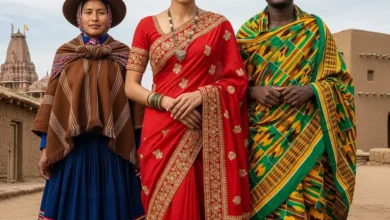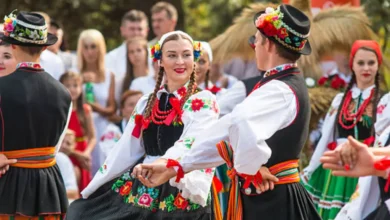Before vows were spoken, cloth made them sacred.
Before crowns were forged, thread anointed kings.
Before borders were drawn, a hemline declared you married, a mourner, a shaman.
Your clothes weren’t just for you.
They were for your community. For your gods. For the dead who watch and wait.
This is not costume. This is covenant.
Your Clothes Are Talking — Do You Know What They’re Saying About You?
That white veil?
That black armband?
That beaded sash?
It’s not “just a look.”
It’s a ritual symbol.
See also How to Create a Traditional Day of the Dead Ofrenda
How to Create a Traditional Day of the Dead OfrendaA public declaration.
A spiritual contract.
A silent signal that says:
“I am no longer who I was.”
For thousands of years — across every culture — people have stitched life’s biggest moments into their clothing.
- Birth.
- Marriage.
- Death.
- Initiation.
- Coronation.
- War.
In this article, you’ll discover:
See also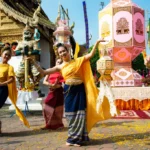 The Role of Traditional Clothing in Ceremonial Practices
The Role of Traditional Clothing in Ceremonial Practices- 👰 What ritual symbols in folk costumes really mean — beyond “pretty dress”
- 🌍 Real examples from Japanese, Ukrainian, Quechua, Balinese, Ghanaian, Sami, Balkan, and global traditions
- 🔄 How specific designs for weddings, funerals, births, and initiations shape social reality
- ⚠️ The painful history of ritual erasure — and powerful modern revival
- ✂️ How to honor ceremonial designs ethically (and why some should never be worn by outsiders)
- 🧵 A simple DIY guide to create your own ritual cloth — for your own life transitions
- 💬 Strong, respectful Call to Action — because sacred moments deserve sacred boundaries
Let’s begin — one rite of passage, one stitch at a time.
What Are Ritual Symbols in Folk Costumes? (Plain & Simple)
Ritual symbols in folk costumes = specific garments, patterns, colors, or accessories worn only during life-changing ceremonies (weddings, funerals, births, initiations) to mark a person’s new social or spiritual status.

Think:
- Japanese white wedding kimono → leaving one family, entering another
- Ukrainian embroidered wedding rushnyk → walking the path of fate
- Quechua woven baby carrier → welcoming new soul into community
- Balinese tooth-filing ceremony whites → filing away animalistic traits
- Ghanaian kente cloth for funerals → celebrating an elder’s life
- Sami gákti with silver brooches → announcing engagement
- Balkan black mourning kerchiefs → holding grief publicly
These aren’t party clothes.
They are portals.
Public announcements.
Threads that bind past, present, and future.
“You don’t just wear a wedding shirt. You become a wife in it. The cloth does the work.”
— Lilia, Carpathian weaver
Why Did Every Culture Dress Up for Rituals?
Because changing your status is invisible.
You can’t see a promise.
You can’t see grief.
You can’t see a soul arriving or departing.
But you can see cloth.
Clothing made the unseen real.
Here’s why it was so powerful:
1. Cloth Makes a New Identity Public
Wear the red sash? You are now married. No questions.
Wear the black armband? You are now grieving. Tread softly.
Wear the feathered headdress? You are now an elder. Listen closely.
Your clothes told everyone how to treat you — instantly.
2. Garments Create Sacred Space
Ritual clothing isn’t worn to the market.
It’s kept wrapped in herbs. Aired under moonlight. Blessed with smoke.
Putting it on = stepping out of ordinary time.
“The moment the ritual cloth touches your skin, the spirits know: something important is happening.”
— Balinese priestess
3. Patterns Invoke Divine Witness
Wedding rushnyks with Tree of Life motifs → calling ancestors to bless the union.
Funeral kimonos with cranes → asking spirits to guide the soul.
Initiation masks with Barong faces → inviting deities to ward off chaos.
The gods were on the guest list — and the clothing was their invitation.
4. Color Seals the Deal
🔴 Red for weddings (India) = fertility, power
⚪ White for funerals (Japan) = purity, passage
⚫ Black for mourning (Balkans) = absorbing grief
🟡 Yellow for initiations (Yoruba) = divine blessing
Color wasn’t a choice. It was a contract.
Quick Guide: Ritual Garments Around the World
| Ritual | Culture | Garment / Symbol | Social / Spiritual Meaning |
|---|---|---|---|
| 💍 Marriage | Ukrainian | Rushnyk (embroidered towel) | Path of fate, ancestral blessing |
| Japanese | White shiromuku kimono | Purity, death of old self, new beginning | |
| Sami | Silver brooches on gákti | Engagement, joining families | |
| 👶 Birth | Quechua (Andean) | Woven baby carrier (aguayo) | Community welcome, protection for soul |
| Navajo | Star quilt cradleboard liner | Celestial guardianship, belonging to cosmos | |
| Balinese | Three-month ceremony whites | First touch of earth, human becoming | |
| 👑 Initiation | Maasai | Black robes for initiates | Transition to warrior/elder status |
| Balinese | Tooth-filing ceremony whites | Leaving animal nature, entering adulthood | |
| Ghanaian | Adinkra-stamped puberty cloth | Proverbial wisdom for new life stage | |
| 💔 Death | Ghanaian | Red + black kente for funerals | Celebration of elder’s life, royal passage |
| Japanese | White kyokatabira kimono | Soul’s final journey, release of ties | |
| Balkan | Black kerchiefs, aprons | Public grief, year of mourning |
Now — let’s walk through each ritual, one culture at a time.
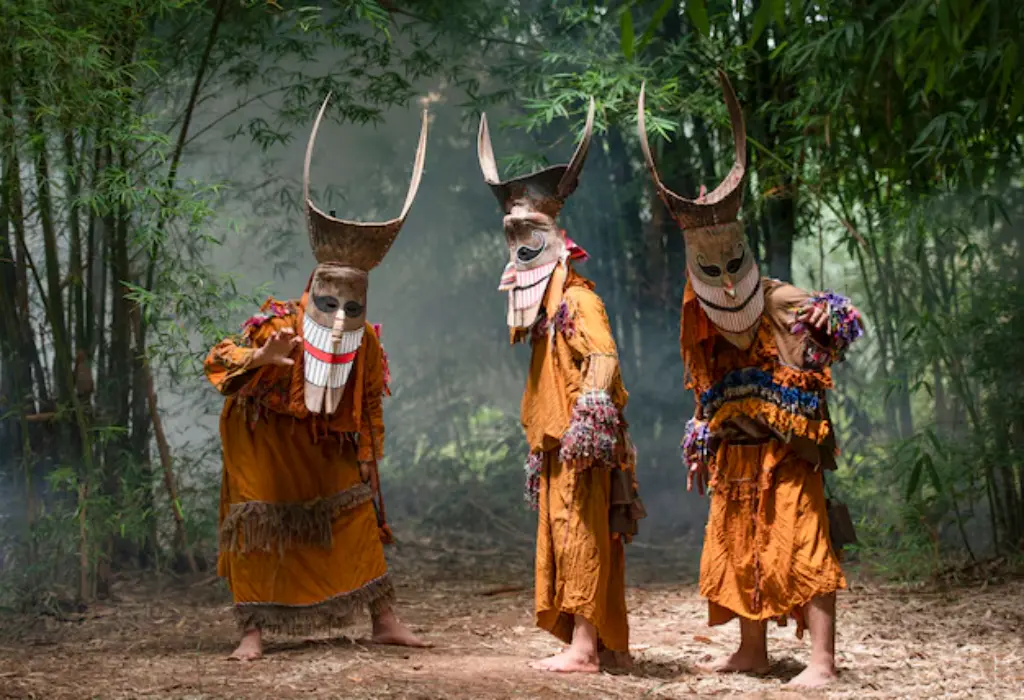
💍 Marriage: Two Souls, One Thread
Marriage isn’t just a party.
It’s a social and spiritual rewiring. The clothing does the work.
Ukraine — The Wedding Rushnyk
Not a garment, but a path.
Bride and groom stand on a long, embroidered towel (rushnyk) during vows.
- Tree of Life motifs → blessing from ancestors
- Dove pairs → lifelong fidelity
- Never tied in knots → smooth path ahead
“You don’t walk down an aisle. You walk the rushnyk. You walk your fate.”
— Lilia, weaver
Japan — The White Shiromuku Kimono
Bride wears layers of pure white silk.
- White = death of her old self, leaving her family
- Wears red underneath → new life, passion, blood of new family
- Changes to colorful kimono (uchikake) mid-reception → rebirth as wife
“The bride dies and is reborn in one day. The kimono is her chrysalis.”
— Kyoto wedding master
Sami — Silver Brooches on the Gákti
Engagement isn’t a ring. It’s a brooch.
- Man gives woman a silver brooch → she pins it to her gákti collar
- Announces engagement to community
- More brooches added at wedding → wealth, family unity
“Silver on wool speaks louder than words in church.”
— Inga, Duodji craftswoman
👶 Birth: Welcoming a Soul to Earth
Birth isn’t just medical.
It’s cosmological. A new star lands. The clothing holds it.
Quechua — The Woven Aguayo
Baby isn’t held in plastic. It’s held in story.
Brightly colored aguayo (baby carrier) is woven with:
- Mountain spirits (Apus) → protection
- Animal guides (llama, condor) → strength, vision
- Zigzags → river of life
Baby’s first home isn’t a crib. It’s the back of its mother, wrapped in prayer.
“The baby learns the world through the threads on its back.”
— Rosa, Awamaki weaver
Bali — The Three-Month Ceremony (Nyambutin)
For three months, baby is a spirit — feet never touch ground.
At ceremony, baby wears white. Touches earth for first time.
- White cloth → purity, spirit-self
- Given new, colorful clothes → welcome to human world
“The first cloth is for the gods. The second is for us.”
— Balinese mother
👑 Initiation: Becoming an Adult, A Warrior, A Priest
You don’t just turn 18.
You are made an adult — through ritual, trial, and cloth.
Maasai — From Boy to Warrior (Eunoto Ceremony)
Initiates shave heads. Paint bodies. Wear black robes.
- Black = death of boyhood, liminal state
- Live in seclusion for months
- Emerge wearing red shúkàs + lion-mane headdresses → new warrior status
The cloth doesn’t celebrate the change. It causes it.
“You enter the ceremony a boy in black. You leave a man in red. The cloth decides.”
— Maasai elder
Ghana — Adinkra-Stamped Puberty Cloth
Girls transitioning to womanhood wear cloth stamped with Adinkra symbols.
- Duafe (wooden comb) → beauty, hygiene, feminine grace
- Gye Nyame (“except for God”) → supremacy of spirit
- Sankofa (bird looking back) → learn from the past
Not just decoration. A wearable curriculum.
“Your first woman’s cloth teaches you how to live.”
— Ashanti queen mother
💔 Death: Weaving Grief, Guiding Souls
Death isn’t just an ending.
It’s a journey — for the living and the departed. The clothing is the map.
Ghana — Red & Black Kente for Funerals
Unlike the West, funerals for respected elders are celebrations.
- Black kente → mourning, grief
- Red kente → danger, spiritual passage, warrior spirit
Family wears a mix — honoring both sorrow and the elder’s powerful life.
“We don’t cry in black. We dance in red. A great life deserves a great farewell.”
— Kente master weaver
Japan — The White Kyokatabira Kimono
Deceased is dressed in a simple white kimono.
- White = purity, release from worldly ties
- Tied left-over-right (opposite of living) → signals passage to other world
- No knots → smooth journey
“The final kimono has no pockets. You carry nothing with you but your soul.”
— Zen monk
Balkans — Black for a Year (and a Day)
Widows wear all black — headscarf, apron, dress — for at least one year.
Not a choice. A social duty.
- Signals to community: I am in grief. Do not approach with levity.
- Absorbs sorrow, holds it visibly
- Slowly reintroduce color after period ends → re-entry into life
“Black isn’t for the dead. It’s for the living — so they know how to hold us.”
— Serbian grandmother
Colonialism Tried to Erase These Rituals. People Kept Stitching in Secret.
Missionaries called them “pagan rites.”
Governments banned puberty ceremonies, funeral dances, spirit callings.
Schools forced white wedding dresses, black funeral suits.
But the people?
They:
- Hid ritual cloths under floorboards
- Stitched sacred symbols inside Western-style clothes
- Held ceremonies at midnight, in forests, in whispers
- Passed patterns down orally — “This is for birth. This for death. Never mix them.”
Today?
- Quechua youth wear aguayos to college graduations
- Maasai warriors wear ceremonial black to UN climate summits
- Ukrainian couples choose rushnyks over red carpets
- Ghanaian designers feature adinkra symbols on global runways — with royalties to elders
“You can ban our dance. But you can’t ban the cloth that remembers the steps.”
— Winona LaDuke, Anishinaabe activist
How to Honor Ritual Symbols — The Right Way
This is critical.
Ritual wear is not for you — unless the ritual is for you.
✅ DO:
- Learn the meaning behind the garment before admiring it
- Buy ritual-inspired art from cultural artisans (e.g., a rushnyk to hang on wall)
- Ask before photographing anyone in ceremonial dress
- Support communities reviving their own traditions
- If invited to a ritual, ask what colors are appropriate to wear as a guest
❌ DON’T:
- Wear a sacred ceremonial garment as a costume (e.g., Japanese wedding kimono, Maasai warrior headdress)
- Buy mass-produced “tribal” wedding dresses or “boho” funeral shawls
- Replicate restricted patterns for personal use or profit
- Use ritual symbols as “aesthetic inspo” without understanding their deep, often painful, significance
“Appreciation asks to witness. Appropriation demands to wear.”
— Dr. Adrienne Keene, Cherokee Nation, @nativeappropriations
DIY: Create Your Own Ritual Cloth (Ethically!)
Want to mark your own life transitions — without copying someone else’s sacred design?
Here’s how — respectfully, personally, powerfully.
Step 1: Name Your Ritual
What transition are you honoring?
- A new home? → “Threshold Blessing Cloth”
- Healing from a breakup? → “Heart-Mending Shawl”
- Starting a new career? → “First Step Scarf”
- Celebrating sobriety? → “Clear Day Kerchief”
Get specific. Give it a name.
Step 2: Choose Your Colors & Symbols (from YOUR life)
- Colors: What hue feels like your grief? Your joy? Your strength? (Forget tradition. Feel it.)
- Symbols: What shape represents your journey? (A key? A broken line mended? A spiral outward?)
Example:
Heart-Mending Shawl → Color: deep indigo (for depth, tears). Symbol: kintsugi-like golden lines (beauty in repair).
Step 3: Create It With Intention
Stitch, paint, dye, or print your symbols onto a piece of cloth.
As you work, speak your intention:
“With this thread, I release the past.
With this gold, I welcome healing.
This cloth now holds my story.”
Step 4: Use It in Your Ritual
Drape it over your shoulders during meditation.
Lay it on your new home’s doorstep.
Wear it to your first day at the new job.
This isn’t cultural theft. It’s personal ceremony.
“Your ancestors didn’t cross oceans so you could wear their pain. They crossed so you could weave your own healing.”
— Toko-pa Turner
Table: Where to Learn About (and Support) Ritual Folk Wear
| Culture | Ethical Source / Organization | What They Offer |
|---|---|---|
| Ukrainian | Vyshyvanka Day Project | Educational resources on rushnyks |
| Japanese | Kyoto National Museum | Online exhibits on ritual kimono |
| Quechua (Andean) | Awamaki | Weaving workshops, ethical textiles |
| Balinese | Threads of Life | Context on ceremonial textiles |
| Ghanaian | The Adinkra Project | Symbol dictionary, artist support |
| Sami | Duodji Sámi Crafts | Info on gákti traditions |
| Maasai | Masaai Intellectual Property Initiative | Advocacy against appropriation |
⚠️ These are for learning and support. Do not buy restricted ceremonial items for personal wear.
Why This Matters More Than Ever
We live in a world of disposable moments.
Births on Instagram. Weddings on Pinterest. Grief in a text message.
Ritual symbols in folk costumes offer something radical:
Depth. Presence. Community witness.
When you wear a mourning cloth — you give your community permission to hold you.
When you wear a wedding rushnyk — you invite your ancestors to your vow.
When you wear an initiation robe — you tell yourself: I am ready.
These garments are anchors.
They whisper:
Slow down.
This moment is sacred.
You are not alone in it.
“In a fast world, ritual cloth is the pause that makes life real.”
— Balinese weaver
Your Turn: Honor the Ritual. Respect the Cloth. Weave Your Own.
You don’t need a crown to mark your becoming.
Start small. Start true.
👰 1. Witness, Don’t Wear
Next time you see ritual wear, ask:
- What moment does this mark?
- Who is allowed to wear it?
- What does it ask of the community?
📚 Try:
- The Book of Symbols by ARAS
- The Rituals of Life by Vincent Crapanzano
- Braiding Sweetgrass by Robin Wall Kimmerer (for a worldview of ceremony)
🧵 2. Support the Keepers
Buy non-restricted art from ritual artisans. Donate to cultural preservation funds. Share their stories — with permission.
Search: “[Culture] + ceremonial textile artist + Instagram” (to learn, not to shop for sacred items)
✏️ 3. Make Your Own Ritual Cloth
Use the DIY guide above.
Mark your own divorce. Your recovery. Your child leaving home.
Make your life’s transitions visible — to yourself, and to your spirit.
🗣️ 4. Speak Up (Gently)
See a sacred headdress at Coachella? A wedding kimono as a Halloween costume?
Don’t shame. Ask a question:
“That’s a beautiful piece. Do you know the sacred ceremony it’s from?”
Plant a seed of awareness.
🌱 5. Give Back
Donate to Indigenous language revival, land-back funds, and cultural centers.
Ceremony needs place. It needs language. It needs elders. Support them all.
“Honor the hands that wove the first vows. Then weave your own.”
— Winona LaDuke
Final Thought: Your Life Is a Ceremony
Next time you see a white veil, a black armband, a silver brooch — pause.
That’s not “just fabric.”
That’s a grandmother’s prayer for a happy marriage.
A community holding a widow’s grief.
A soul arriving on earth, wrapped in love.
Ritual symbols in folk costumes are alive.
Witness them with reverence. Learn their language. Never, ever steal them.
And remember:
You, too, are walking a sacred path.
Birth.
Love.
Loss.
Becoming.
Mark it. Honor it. Weave it into your days.
💌 Loved this? Share it with someone marking a milestone — gently, wisely, beautifully.
🧵 Follow #RitualThreads or #WearYourStory on Instagram (to witness, not to copy).
✏️ Grab thread. Name your transition. Begin your cloth.

